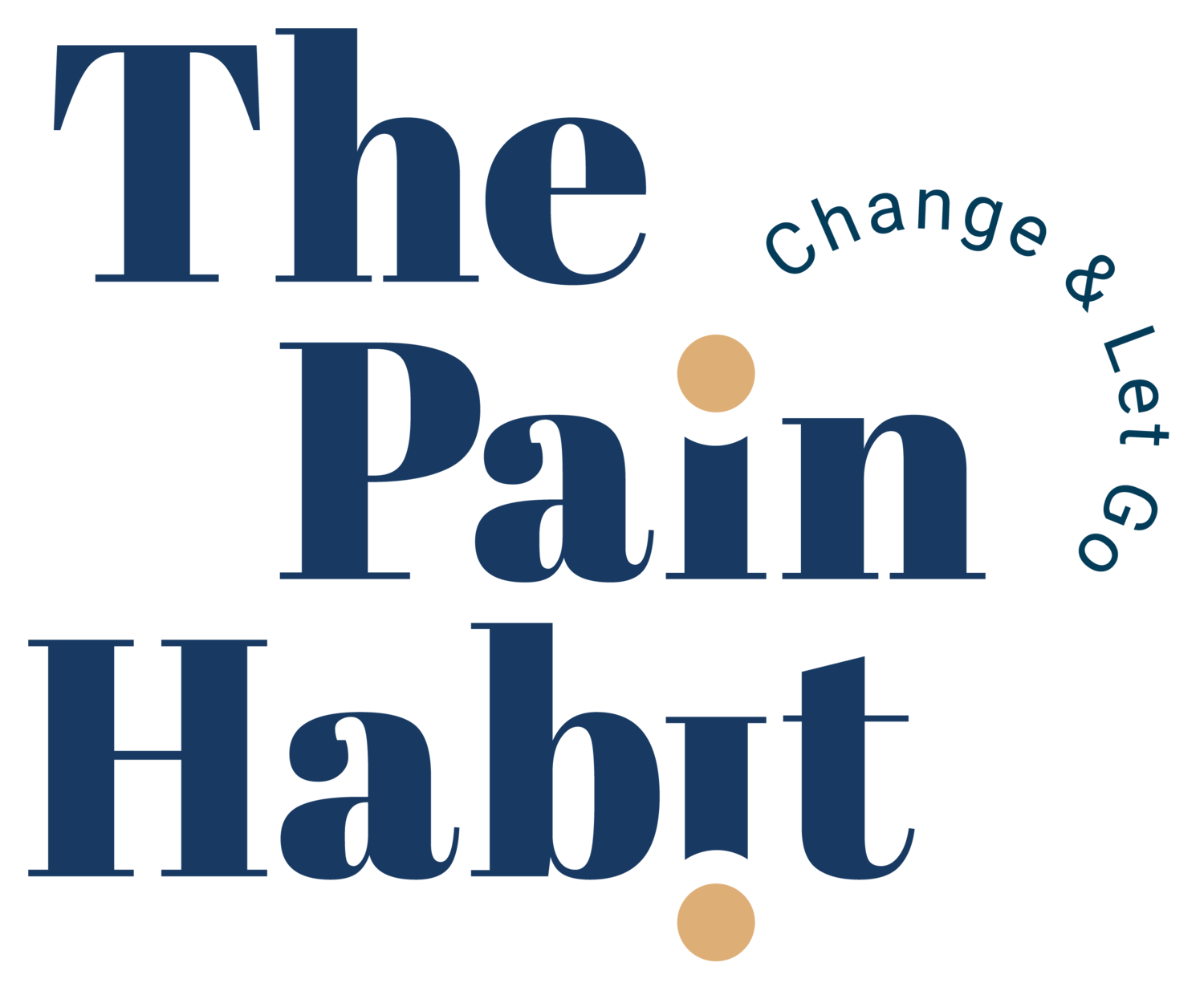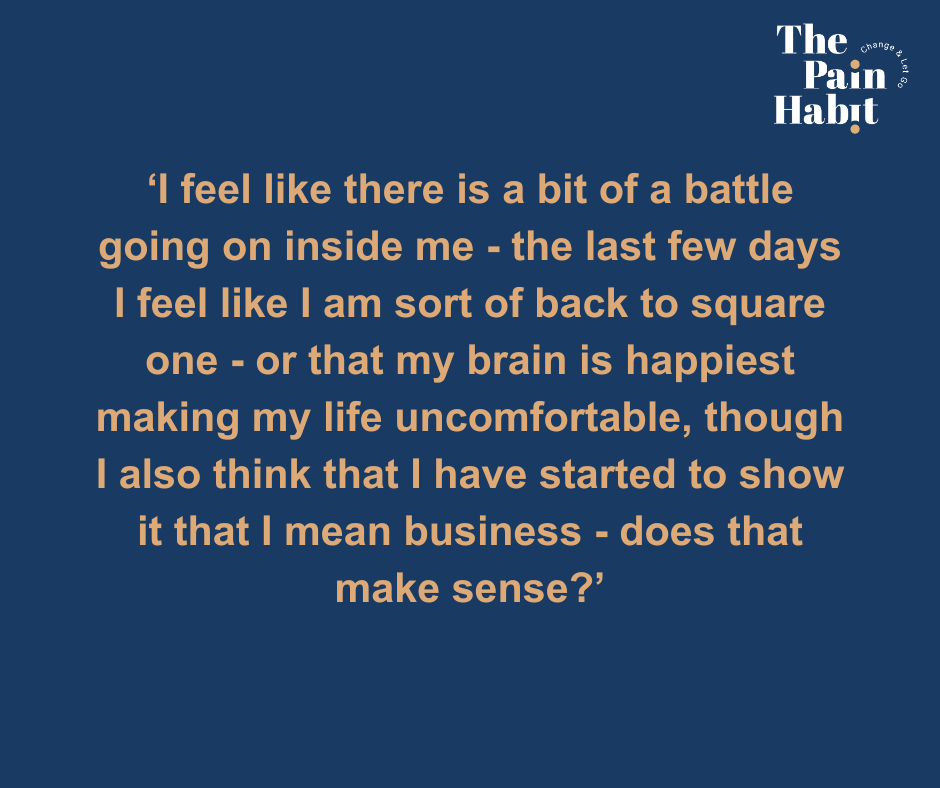Predictable Pain With Movement
Predictable Persistent Pain
Do you have a movement that you can predict will cause pain?
Do you have a part of the body that hurts even without movement that you believe is only due to the structure itself or its position?
Are you open to the idea that you can change any persistent pain or the pattern of it without needing to change the structure you believe to be at fault?
Read on if you are open to that and curious about approaching this process, not through an emotional lens but through logic.
Choose The Movement
Choose the activity or movement that hurts or notice the pain that pops up with that movement.
That may cause fear or apprehension before it, pain during or after it, and then perhaps frustration with you or the pain. Thai can lead to more fear that you won't overcome this pain or these pains or exasperation at your perceived failure to change this process where you hear others move through it successfully.
Firstly, the pain that appears is 100% real.
Faulty Beliefs
It is, however, potentially based on the incorrect belief that:
The pain equals damage.
The pain proves there is damage.
The pain is the movement of damage that you have proof of.
The movement is creating more damage.
The pain is due to damage that something has not yet been discovered that is damaged.
The movement is dangerous.
The movement is going to hurt.
Damage equals pain.
None of these beliefs are absolute truths.
Scary Stories
They are just beliefs you may have been told by medical practitioners or people of authority over you. You may have bought into these beliefs because of that, said them to yourself repeatedly, and because of that conditioning of pain with movement plus that belief, had those beliefs repeatedly confirmed with each painful episode.
It becomes a reality. So, we do not deny the existence of pain or that it appears with and without movement and in the structure or body region you describe. Still, we assume you considered this relationship causative, not a correlation.
Let's explore how that assumption of cause is understandable but floored.
Time To Get Curious
Here are some questions to ask:
Is the pain due to new physical tissue damage at that moment?
(Ask yourself if that movement could damage any other human of the same age. Remember, the body is not made of cheesecake 🥮; it is solid and resilient 💪, even though, at the moment, it may not be conditioned as well as it could be).
Is the pain due to the potential of actual tissue damage?
(Walking, reaching, lying down, bending forward, turning, etc., do not harm the human body).
Suppose the pain is not due to actual or potential physical damage. Could it have an emotional aspect that you may be misinterpreting as physical damage because of the belief through which you experience the world?
(Physical and Emotional pain use the same nervous system to communicate awareness of the threat. Emotional pain, as you know, is felt in the body, with no apparent structural change found as that pain is experienced. For example, notice where you experience fear, frustration, anger, resentment and regret in your body. We all can make mistakes based on incorrect assumptions).
A Few More Questions
Do you fear the movement?
Do you fear the pain or any other pain that may appear?
Are you frustrated with your inability to perform the movement or if the pain appears with or after it?
Are you open to the idea that your fear or frustration of the movement or pain, with the movement or pain or after the movement or pain, could be a significant contributor to the pain?
Are you open to the idea that, in the logical absence of new or potential tissue damage from or with the movement, it is the emotion present plus the movement that creates the pain?
That combination of movement and how you feel in that moment, which is currently a prediction of the future based on a memory of the past and founded on an incorrect belief, manifests pain.
Instinctual Reactions
Now, let's look at some common natural and instinctual reactions to pain.
Do you:
Fight - Push through or criticise yourself in the presence of pain. Tell everyone how you've tried everything. Say you're a ‘warrior’ and tell everyone you've got a high pain threshold, and say it'll never beat you?
Flight - Try to distract yourself to get rid of the pain. Netflix and doughnuts, anything else to take your mind off the pain, painkillers, block the sensation?
Freeze - Stop immediately and look for anything to avoid feeling the pain?
Fawn - Give up and tell everyone how bad the pain is, post it on Facebook, or be sad, sullen, silent, and demotivated. Do you tell yourself and anyone who will listen what a failure you are?
These behaviours have a temporary place in our lives but not a permanent one. We can all use them occasionally.
Recognisable Defaults To Change
If you recognise you may default to any of the above and perhaps persistently jump between them, would you be open to creating an environment that allows the emotions and the nervous system reacting to them a period to enter a healthier option through Rest, Digest, Repair, and Renewal?
Could you create a boundary representing care, kindness, love, patience, listening, validation and gentleness?
Could you practice this for 7-10 days before returning to the point of considering the same movements or activity that currently triggers the pain?
Are you worth that time and investment?
Is your nervous system worth it, or do you want to drag it through the hedge backwards because you think what you know needs doing, and it should be done now?
Start With A Breath
Could you represent rest, digest, repair, and renew with two minutes of breathing each night or whenever you pause for a hot drink?
Could you move another part of your body that you know is safe, with three of those slow breaths, to symbolise you are worth taking a moment for yourself, with no justification for doing so other than knowing you deserve it?
After a few days, could you start visualising the movement from that calm state and notice how your brain and body respond?
Could you be curious about those sensations and even fascinated with them, as you aren’t moving?
Holding Space For Yourself
Should anything appear that you may have historically labelled as ‘bad’, could you now allow and hold the space for it in your body while observing and calmly breathing alongside its presence?
Could you welcome those sensations, knowing they are safe and natural but not representative of actual danger?
Could you start to believe that the pains manifest historical fears and frustrations with movement, probably from a time in your life when you felt overwhelmed and were perhaps numb to the earlier warnings our body typically gives us, to alert us to that emotional overload?
Could you forgive yourself for your role in the generation of the pain if you had no other person to help you, knew no better, or had no other option to keep going during that time?
Suppose that time is truly over and the pain has remained a stressor, creating its self-perpetuating drivers. Could you be open to taking responsibility for your recovery?
Facing External Stressors
If external stressors remain now, face and deal with them where you can, then enter that place of calm within yourself during small moments each day until you can start to access movements that may bring you a balance to these stressors, which may then offer you more space to explore a route out of them rationally.
You have the power to move through this movement or activity that you currently expect to be painful.
Only then can you view your life through the filter of less pain or being pain-free.
You must take steps backwards first before taking them forward, like deep breaths before an interview, shaking muscles before a sprint, whispering to yourself that you can do it, or grounding yourself in the present moment to enter an emotional state of calm presence before taking on what may come next.
Practice Being Calm Through Calm Practice
Only then can you maintain a sense of calm once you’ve practised feeling it and then introduced the illusionary threat of prediction through memory with movement. This carves out a neural pathway of freedom with comfortable, liberating, and life-changing movement.
Reading these words is the first step, but it is only helpful if you take more of them through the actions you commit calmly to.
You can do this.
Ready, go set.
What’s next?
Take Your First Step to Recovery.
Join our FREE private Facebook group, The Pain Habit Community, to see how others have successfully returned to a pain-free life. Get support on your journey.
Sign up for The Pain Habit Blog below.
Subscribe to The Pain Habit YouTube channel.
Buy The Pain Habit book. Order here.




